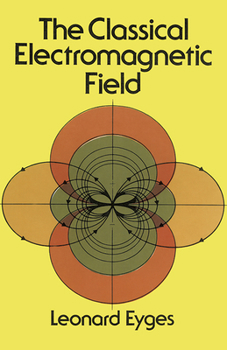The Classical Electromagnetic Field
Select Format
Select Condition 
Book Overview
The Classical Electromagnetic Field emphasizes physics first, then mathematics. This and the fact that lucid exposition of theory receives priority over subsequent manipulation marks the book unusual,... This description may be from another edition of this product.
Format:Paperback
Language:English
ISBN:0486639479
ISBN13:9780486639475
Release Date:November 2010
Publisher:Dover Publications
Length:448 Pages
Weight:1.12 lbs.
Dimensions:0.8" x 5.7" x 8.2"
Customer Reviews
3 ratings
A Good Back Up
Published by Thriftbooks.com User , 20 years ago
I recently took Electrodynamics with Jackson and frequently used this book as a backup/reference. I highly recommend it for that purpose, but it was not very useful as a learning tool by itself.
Another good electromagnetics book
Published by Thriftbooks.com User , 21 years ago
This is a great book! The treatment is accessible and the section on electrostatics is outstanding in comparison with many other books. The author goes out of his way to both explain the subject in detail and to share his rather obvious enjoyment of the subject. This is another case of "if you read all these books then you will know electrodynamics". Not everything is here but it is a great supplemental text and reference. I don't know if anyone is using it as a single textbook for a course however. For the practical physicist in solid state, optics, electrodynamics, etc. this is a must have.
A great book for the applied physicist.
Published by Thriftbooks.com User , 25 years ago
There is a tendency nowadays, especially if you are at Harvard, to think of a physicist as someone who only works on group-theoretical notions and topological structures in particle physics and cosmology, with everything else that looks something like physics to be worked on by crude, practical people in a electrical engineering department. This book, however, which was developed by a professor at Harvard's neighbor MIT, obviously has the attitude that the solution of partial differential equations applied to idealized (and therefore analytically solvable) problems in electromagnetic theory is still exciting physics. As such, this book belongs in the same class as Sommerfeld's "Electrodynamics" and Stratton's "Electromagnetic Theory." It is clearly written with good problem sets and covers enough material for a beginning graduate course. The units used are Gaussian, which makes for a better discussion of relativistic concepts. The mathematics used includes contour integrals, Green functions, and Hankel functions. At first sight, the author's use of only E and B and never D and H may come across as the fanaticism of the ultra-pure physicist. On the contrary, it makes for a clearer discussion of the boundary-value problem at the interface of continuous polarized and magnetic media.






